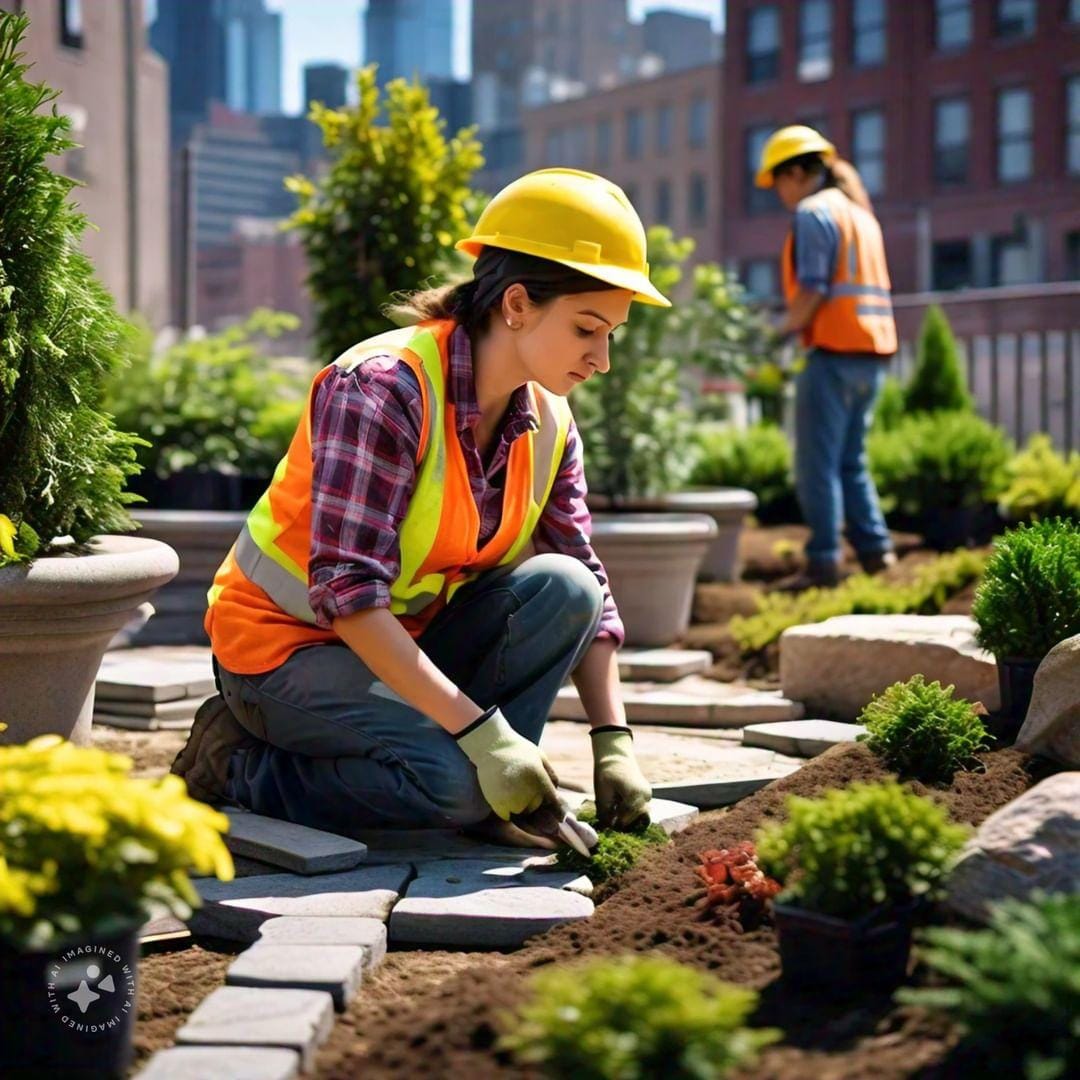





In the rapidly evolving world of urban development, the importance of integrating greenery into our living and working environments has never been more critical. Landscaping, hardscaping, and greenery plantation are no longer just aesthetic choices; they are essential elements that enhance functionality, sustainability, and well-being in commercial and residential buildings alike.
Landscaping: Creating Lush, Livable Spaces
Landscaping is the heart of green design, transforming empty
areas into vibrant ecosystems. In commercial buildings,
landscaped spaces offer more than visual appeal—they create
inviting outdoor areas for employee relaxation, improve air
quality, and even increase productivity. Residential properties
benefit immensely from landscaping, as lush gardens and greenery
improve mental health, provide natural cooling, and foster a
sense of community among residents.
Thoughtfully designed landscapes also help manage stormwater
runoff and reduce urban heat islands, addressing critical
environmental challenges. Choosing native plants, which require
minimal maintenance and thrive in local climates, ensures a
sustainable approach to landscaping while preserving
biodiversity.
Hardscaping: The Backbone of Durable Design
While landscaping focuses on greenery, hardscaping brings
structure and functionality to outdoor spaces. Hardscaping
elements—such as walkways, patios, retaining walls, and water
features—form the foundation of usable outdoor areas. These
features are particularly vital in commercial buildings, where
high foot traffic demands durable and well-planned designs.
In residential properties, hardscaping enhances the usability of
gardens and outdoor spaces, turning them into extensions of the
home. From cozy fire pits to elegant stone pathways, hardscaping
adds charm and practicality. Materials like natural stone,
concrete, and composite wood provide a balance between
aesthetics and longevity.
By integrating hardscaping with landscaping, architects and
designers can create seamless transitions between green spaces
and functional areas, ensuring harmony across the entire
property.
Greenery Plantation: Breathing Life into Structures
Planting greenery goes beyond beautification; it is about
creating environments that support life and promote
sustainability. Green roofs and vertical gardens, for instance,
are transforming how urban spaces interact with nature. These
features not only insulate buildings and reduce energy costs but
also combat air pollution and improve urban biodiversity.
In commercial spaces, strategically placed greenery can reduce
noise pollution and enhance the overall ambiance, making offices
and retail spaces more welcoming. For residential properties,
trees, shrubs, and flowering plants create a tranquil retreat
for families, offering shade and a connection to nature.
The careful selection of plant species ensures that greenery
remains low-maintenance while thriving in the environment.
Seasonal plants, drought-resistant varieties, and edible gardens
can all add unique value to a property, reflecting both
creativity and practicality.
The Perfect Harmony: Integrating Landscaping, Hardscaping,
and Greenery
The true beauty of modern design lies in the seamless
integration of these three elements. For example, a commercial
plaza can feature shaded seating areas surrounded by lush
landscaping, with hardscaped pathways guiding visitors.
Similarly, a residential complex might incorporate terraced
gardens, natural stone steps, and tree-lined patios, offering a
harmonious blend of comfort and elegance.
Moreover, combining these elements can significantly enhance
property value. Well-maintained green spaces, durable
hardscaping, and thoughtfully planned plantations are known to
attract higher rents, increase sale prices, and leave lasting
impressions on tenants and buyers.
Sustainability: A Core Philosophy
Landscaping, hardscaping, and greenery plantation are integral
to sustainable construction practices. With water-conserving
irrigation systems, eco-friendly materials, and
climate-responsive designs, these elements contribute to a
healthier planet. Rain gardens, permeable pavers, and recycled
materials are just a few examples of how these practices can
align with green building certifications.
Conclusion
Whether it’s a sprawling commercial complex or an intimate
residential community, the integration of landscaping,
hardscaping, and greenery plantation is a cornerstone of modern
architecture. These elements not only elevate the aesthetic
appeal of spaces but also provide environmental, economic, and
social benefits.
In every project, the goal is clear: to create spaces where
people and nature coexist in harmony, ensuring that future
generations inherit a greener, more sustainable world.